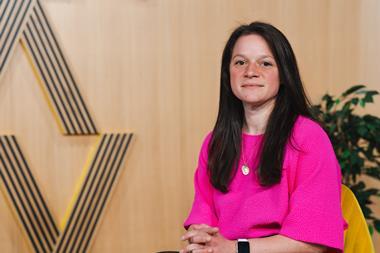RSA director notes there is a ’clear market demand for the job software houses do’
When it comes to eTrading, brokers currently have the option of using an insurer extranet or software house.

Essentially, an extranet allows for digital trading with one insurer’s product set and provides brokers the option to go directly to the underwriter. On the other hand, a software house offers brokers propositions from a range of different firms and can provide more comparison options.
According to Insurance Times’ 2024 Five Star Rating Report: ETrading, published in May 2024, there are multiple reasons why a broker might choose one or the other.
Based on feedback from around 700 UKGI broker respondents, some of the reasons for trading with a software house include ease of market search (58%) and the ability to consistently compare (67%) like for like products.
When it comes to extranets, ease of use (46%) and insurer encouragement (32%) were among the explanations for wanting to trade in this way.
Vivek Banga, managing director at Polaris, explained that the two trading routes are “completely distinct” from a distribution point of view.
He said: “If I’m a broker sitting here in my office, I can go to an insurer extranet, but what I will get on the insurer extranet is only that insurer’s product.
“If I am using [a software house] and I work through my own software platform, I can get access to the panel and the panel will mean multiple insurers [and] MGAs.
“So, a lot of brokers, not surprisingly, would say ‘why not just enter data once in my own system and get access to the panel’.
“On the other hand, on the extranet, the insurer might have a slightly shorter process because it’s just dedicated to them and not to the market.”
Software houses more popular?
However, data suggests that software houses could win out this popularity contest in the future.
Read: More brokers favouring live chat over phone calls for eTrade queries
Read: Aviva refuses to be complacent on eTrading service following record report result
Explore more eTrading-related content here, or discover other news analysis stories here
For example, according to Insurance Times’ 2023 Five Star Rating Report: ETrading, published in May 2023, some 33% of brokers felt that software houses will become more dominant in the next few years, while only 11% felt this way about extranets.
Wayne Jefferson, head of eTrading at software house Applied Systems, said: “The main difference really, from a broker’s perspective, is one of time.”
Nick Houghton, chief executive at JMG Group, added: “The extranet itself can be good. My whole point is that this is about online trading and the efficiency of how you trade online in volume.
“My big gripe with extranets is I put a load of details in and get a single quote back. If I want a quote from another extranet to test the market for our client, then I am doing the same thing again and again.”
In turn, Banga said that insurers were faced by an “interesting dilemma” – they naturally want to grow their own extranets, but at the same time recognise the growth of software houses and liaise with these businesses.
He explained: “The advantage of a broker coming to [an insurer’s] extranet is that it is only their product which is there and they can also give them more marketing messages.
“Clearly, it is in their interest if brokers keep coming to their extranet and they have all invested in them, so why would they not want to continue building that route?
“But they also can’t ignore how traffic is growing through the panel route. Especially with large brokers, that route has become quite popular, so they are also adding their products to the panel.
“So, for insurers at the moment, it is a case of spreading their investments across both routes.”
Insurer view
According to Insurance Times’ 2024 Five Star Rating Report: ETrading, most brokers are currently making the most of having a choice of digital trading channel, with 62% using a combination of both extranet and software house trading routes.

However, Rob Fairs, product and channel management director for SME and commercial lines at RSA, said the “challenge for software houses and insurers is to ensure that they can work in partnership to drive innovation, the pace and change of delivery and move away from just the computer says no”.
He described this challenge as a potential “risk”.
Fairs added that with extranets, insurers ”have the ability to be more flexible in our approach. We’ve placed significant investments in our extranet over the last couple of years”.
Despite this view, he noted that there was a “clear market demand for the job software houses do”.
Fairs said: “Given the fact that there is that want in the market for this service, clearly our software house offering is intrinsic to what we do here at RSA within our eTrade business and it’s super important to us.
“Developing those relationships to [work collaboratively] with software houses is a really important part of the way we try to deploy a service to the market.”
Working together
So, how are software houses and insurers working together to create a seamless eTrading experience on a broker management system (BMS)?
One way is through education, with panel insurance firms informing software houses of new products and how they can be used.
Banga said: “They educate the software house, the software house educates the broker in turn.
“It’s about creating that awareness.
“The software house is in touch with brokers on a regular basis through their technology. It might be a simple marketing message, it might be a newsletter, it might just be creating awareness, [or] it might be a workshop.
“All of that helps because it makes the broker more well informed about the choice that is available to them.”
Meanwhile, Ben Legg, chief product officer at software house Open GI, said communication was “key” – he explained that his firm “acts as a single point of contact for our distribution and our community of brokers to talk to that insurer”.
He added: “We have an active panel in commercial and personal lines and that panel is built up of a curated set of insurers that we believe will give customers access to the best possible price for that product.
“We work with insurers to come onto that panel and to offer new products on that panel. We evolve that panel based on the needs of our brokers.
“So, the primary role we play is making sure that customers can access a diverse set of products that they can eTrade.”
Jefferson added that Applied Systems was working “hard to try and bridge the gap between BMS and insurer extranets by hooking into insurers’ most up to date products that are generally traded on their extranets too”.
“[This] enables the broker to realise all the advantages, such as time savings and data storage and use,” he said.
“It’s then a choice for the broker. At the end of the day, our mission is to help our brokers eTrade efficiently and accurately.”

His career began in 2019, when he joined a local north London newspaper after graduating from the University of Sheffield with a first-class honours degree in journalism.
He took up the position of deputy news editor at Insurance Times in March 2023, before being promoted to his current role in May 2024.View full Profile
Hosted by comedian and actor Tom Allen, 34 Gold, 23 Silver and 22 Bronze awards were handed out across an amazing 34 categories recognising brilliance and innovation right across the breadth of UK general insurance.























































No comments yet